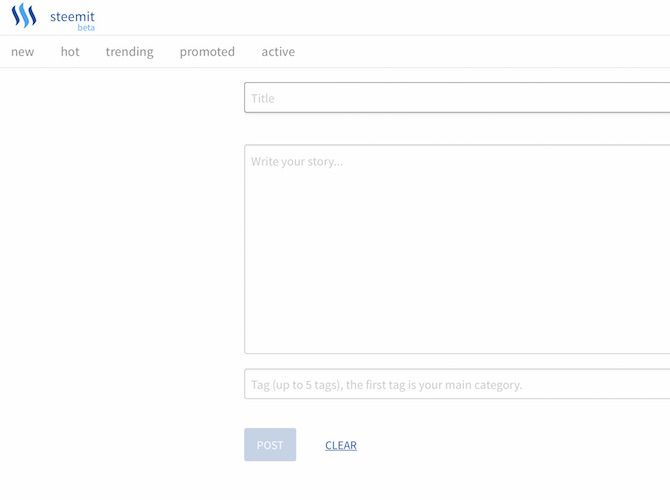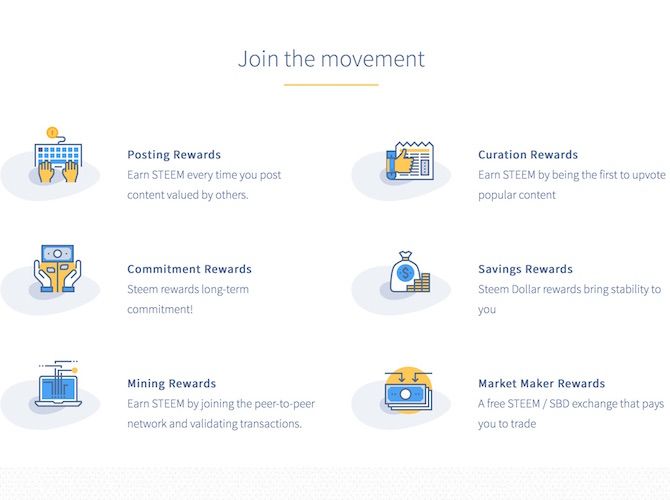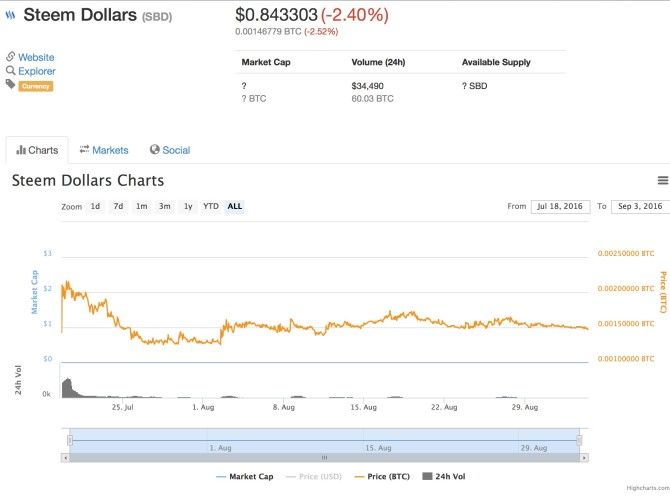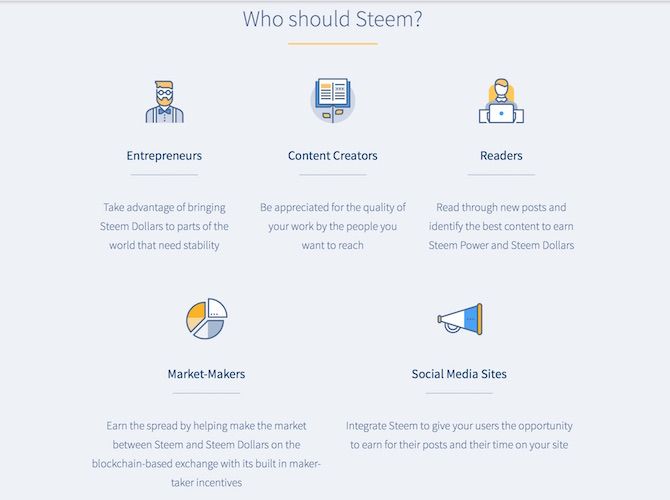In a world where every social media platform seems to be trying to be just like all the others -– seriously Instagram, did the world really need another Snapchat? -- Steemit is a new blockchain-based social media initiative that is challenging everything about the way we communicate ideas on social media.
It's no secret that advertising on social media is a huge factor in the current design of social media giants like Facebook, Instagram, and Twitter. Brands target their advertising on all of these platforms, and both the brands and platforms profit significantly from these deals.
Steemit wants to change the dialogue around how content is created and shared online by paying the content creators (people like you and me) for posts on the platform. Their theory is that decentralizing the platform by paying content creators and curators rewards good content -- encouraging discussion and quality while keeping the focus and direction of the platform within the control of the users.
The minds behind Steemit may have a point. Think about all of the content you have posted to various social media platforms over the past ten or so years –- you've been providing these platforms with unique content, and they've been profiting from it.
Sound wild? Steemit is definitely unlike most popular social media sites – but with social media frustrations rising amongst many users, that's maybe exactly what could make Steemit so successful.
What Is Steemit?
The easiest way to describe Steemit is as a cross between Reddit and a personal blog. Like a personal blog, you can post whatever you wish and longform posts are encouraged. Much like Reddit, you can also share content from anywhere on the internet, and posts are upvoted, downvoted, and commented on by other users based on their opinion of the posts' content.
The content shared on the platform varies widely. Looking at the "trending" page at the time of writing, I saw posts dedicated to healthy eating, art tutorials, meta discussions about the Steemit platform, a cute dog video, the importance of sleep, a YouTube star, and thoughts on anarchy.
Each user can choose what they post, and obviously the topics range widely, but there is significant motivation for their posts to be high quality – after all, that's where the money is.
How Do You Get Paid for Content?
There are actually several ways that Steemit users get paid for using the platform. The simplest ways to earn money ("STEEM") on Steemit are:
- Creating content that others enjoy.
- Curating content through upvotes and downvotes.
Each user begins with eight STEEM, a cryptocurrency used by the platform. Every time you upvote someone, you endorse them with a small amount ($0.01) of STEEM that they can redeem later. This means that popular posts can be earning hundreds of STEEM dollars (currently equivalent to about $0.84 USD each), with very little investment from each individual user.
Much like with any kind of cryptocurrency, the mechanisms behind STEEM can be a rabbit hole. If you're interested in learning more about how exactly STEEM retains value, I'd suggest reading this intro to STEEM guide, an introduction to cryptocurrency, or this explanation of how cryptocurrency works.
Why Are People Using Steemit?
In the world of social media, it's rare for any one platform to be completely distinct from other available platforms. Steemit is still in its Beta phase and the STEEM currency fluctuates regularly, making it a bit of a risk to fully invest yourself in the platform at this point.
As well, it could be argued that a lot of Steemit's benefits could be achieved in other ways. Community-moderated discussion is very popular on Reddit and Reddit alternatives, and with some strategizing advertising income from a personal blog can quickly help to supplement your income.
With that being said, there are a lot of reasons that so many people are being drawn to Steemit and Steemit's approach to social media.
Firstly, there's the monetary aspect. Unless you're lucky enough to have scored some kind of sponsorship deal, it's highly unlikely that you're being paid by your social media accounts to post content. After years of creating social media content for free, being paid for creating content that you are interested in can seem like an amazing opportunity.
Other users enjoy that Steemit allows for longform posts, especially since the majority of social media is so highly focused on photos and video. Longform posts allow for a development of ideas and conversation that simply isn't possible in 140 characters, and many social media users want to be able to express themselves in this way on a platform that supports this level of discussion.
The audience of Steemit is another important quality for many users. Instead of creating posts that are seen by family and friends you've made off-line, Steemit is a global community of people. Many users may like the anonymity that Steemit provides, allowing them to talk in-depth about subjects that aren't discussed on Facebook or Twitter without worrying about arguing with a family member or childhood friend.
Another promising characteristic of Steemit is the transparency of the developers with respect to how the platform works and the direction the platform will be going in the future. The creators of Steemit regularly post longform updates explaining the ongoing development process and appear to be receptive and responsive to feedback from users about updates, suggested features, and the mechanisms of the site.
Is Steemit Part of a Wider Trend?
There are a lot of great things about popular social media. When most of the world uses similar platforms, it offers incredible opportunities for global communication. As well, many social media platforms (such as Facebook Messenger) are now moving past their original purposes and moving towards becoming useful tools in most facets of everyday life.
That being said, many people want more from their online connections than existing mainstream social media sites can offer and are frustrated by the amount of censorship, corporate control, and information collection present in most social platforms. The movement towards a decentralized internet is much larger than Steemit itself. Other platforms such as MaidSafe, LBRY, Ethereum, and Synereo [Broken URL Removed] (amongst others) are also working towards decentralization in various areas of the internet.
Decentralization definitely has not been figured out. Scrolling through Steemit for even a few minutes will lead to several discussions from platform creators and users alike thinking through the greater implications of a decentralized internet, the benefits of different approaches to decentralization, and the problems, disagreements, and fallacies that they are running into along the way.
Steemit is definitely one of the more interesting developments in social media recently, and you never know -- if it sets a strong enough precedent it could possibly change the way that social media works!
Have you used Steemit? If you have, I'd love to hear your thoughts about the platform in the comments! If you haven't, what would keep you from trying it out, and what would you like to see in the social media of the future?






